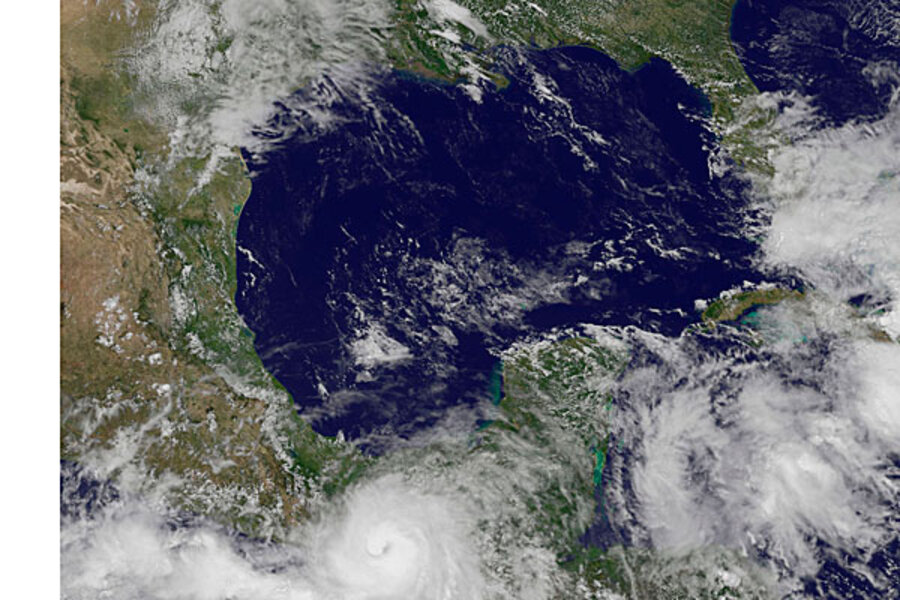Hurricane Barbara weakens to tropical depression in Mexico
Loading...
| Oaxaca, Mexico
Hurricane Barbara drenched a sparsely populated stretch of Mexico's southern Pacific coast with rain Wednesday after making the second-earliest landfall since reliable record-keeping began in 1966. It quickly lost strength over land but not before killing at least two people, including a man identified by local officials as a U.S. surfer.
By evening, Barbara had weakened to a tropical storm, the U.S. National Hurricane Center said. On Thursday morning, the Center said that Barbara continues to weaken as it moves inland, dumping heavy rain across portions of southeastern Mexico. Already parts of the state of Chiapas have had 16 inches for rain.
The director of civil defense for Oaxaca state, Manuel Maza Sanchez, said a 61-year-old man from Colorado died while surfing at Playa Azul, a beach near the resort town of Puerto Escondido, when Barbara made landfall at midafternoon as a Category 1 hurricane about 120 miles (200 kilometers) to the east. He said the man was dragged out by waves kicked up by Barbara and then battered against the shore.
The U.S. Embassy in Mexico City was not immediately able to confirm the man's name, nationality or hometown.
Maza Sanchez also said a 26-year-old Mexican man drowned in the nearby city of Pinotepa Nacional while trying to cross a rain-swollen creek.
Farther to the east, near the landfall area, 14 fishermen who set out to sea Wednesday morning from the town of Tapanatepec had been reported missing, Maza said.
Barbara came ashore with winds of about 75 mph (120 kph) and lost power as it moved inland. By Wednesday night, maximum sustained winds had dropped to 50 mph (85 kph) as the storm slogged northward, but flooding was reported in some areas and remained a threat.
On May 23, the National Hurricane Center had said odds favor a above-normal hurricane season in the eastern Pacific for 2013.
As The Christian Science Monitor reported:
Indeed, the season could be extremely active, according to Kathryn Sullivan, acting administrator of the National Oceanic and Atmospheric Administration (NOAA).
Forecasters at the agency's Climate Prediction Center anticipate from 13 to 20 tropical storms over the six-month season. Of those, between seven and 11 are expected to become hurricanes, with three to six of the hurricanes expected to reach "major" status, meaning they host maximum sustained winds topping 111 miles an hour.
But Barbara appeared to start the Pacific hurricane season unusually early, and it also made landfall farther east than any other Pacific hurricane since 1966. Such storms often form closer to the resort of Acapulco, to the west.
Officials in Oaxaca had rushed to prepare emergency shelters and suspended school for children in coastal communities as rain began lashing the coast when the storm formed close to shore.
The area first hit by the storm is a largely undeveloped stretch of coastal lagoons, punctuated by small fishing villages.
The major Gulf oil port of Coatzacoalcos is located on the other side of the narrow waist of Mexico known as the Isthmus of Tehuantepec. But the hurricane center predicted Barbara would dissipate into a rain system well before reaching Coatzacoalcos.
Maza Sanchez said classes would be suspended at schools along the coast for the rest of the week. Storm shelters were set up in 20 towns and hamlets, and such shelters are often installed at schools.
Copyright 2013 The Associated Press.







